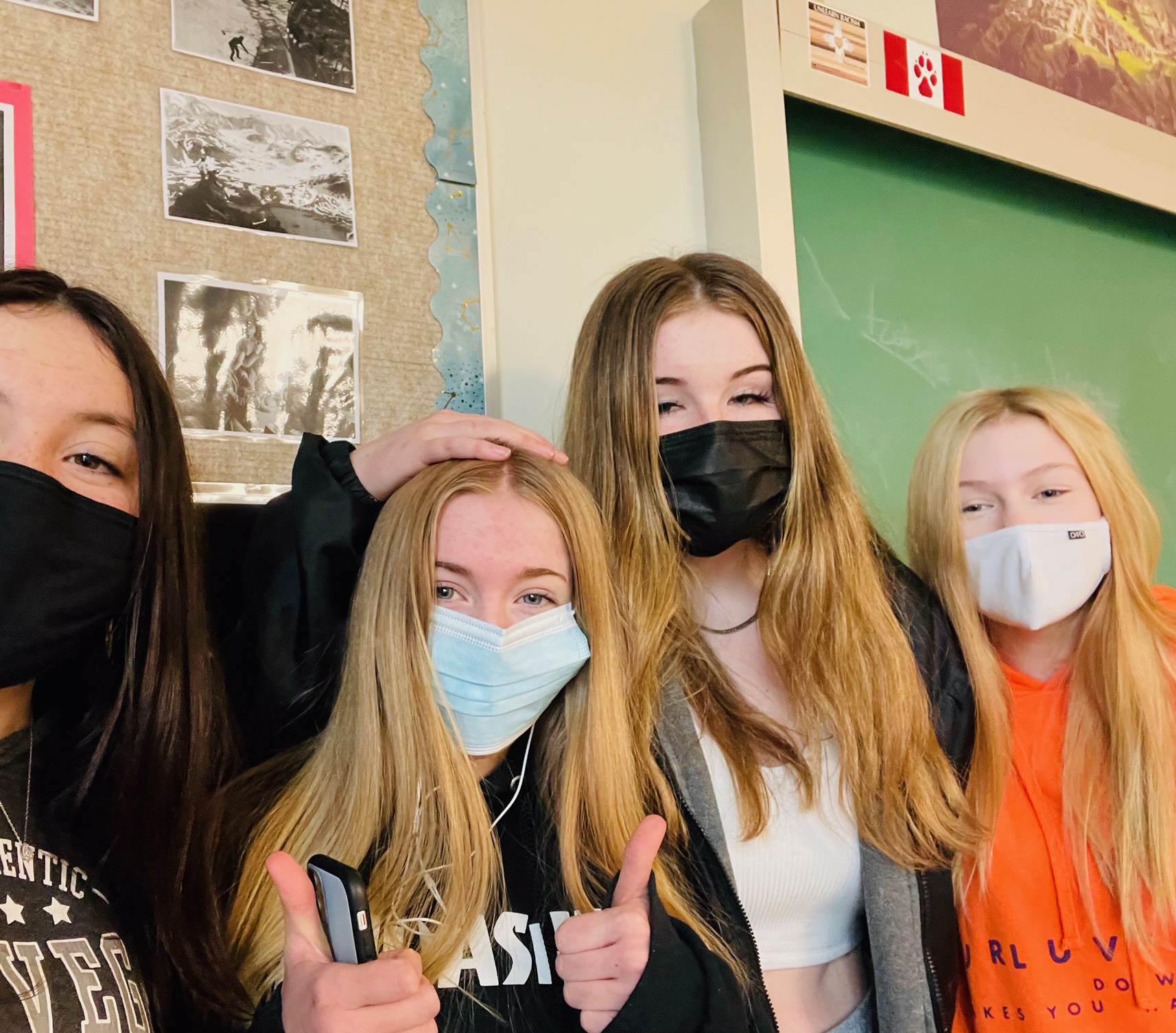B.C. students will have to mask up, again, when they head back to school in a couple of weeks.
A surge of new COVID-19 infections driven by the highly contagious Delta variant equates to mandatory masks indoors for students, teachers, staff, and visitors, as well as enhanced cleaning in schools across the province.
Students will also continue to have to complete daily health checks and stay home when feeling sick.
The province says rapid response teams will continue to operate throughout B.C., working with health authorities and school districts “to provide support and review school communicable disease plans to keep schools safe.”
“We know how excited students and families are about being back in school with extracurricular and sports programs and how important it is for children to be connected to their teachers and friends on a full-time basis,” said education minister, Jennifer Whiteside.
“We also know we can do this safely, even as the pandemic continues to present challenges. B.C. was one of the few jurisdictions in Canada to keep schools open and safe last year thanks to the monumental efforts of everyone in the education system. The precautions we are announcing today allow students to continue learning in school with safeguards in place, so they have every opportunity to achieve their best.”
What we won’t be returning to, is widespread remote learning.
The province says that research by the BC Centre for Disease Control (BCCDC) last year noted a significant impact on students from remote learning.
According to the BCCDC, this included interrupted learning, increased child stress, decreased connection, increased loneliness and mental and emotional health effects.
On top of that, the province noted that studies by the Vancouver Coastal Health Authority and Fraser Health Authority “showed that after a resumption of in-class learning, schools were not significant sources of COVID-19 transmission.”
As well as indoor mask requirements for all K-12 staff, visitors and students in Grades 4 to 12, health authorities can introduce more regional measures specific to individual schools or school districts in instances where community transmission rates are higher.
On a bright note, the province says there will be greater opportunities for school sports and extracurricular activities, continued increased ventilation and improvements in schools, and daily cleaning and disinfecting protocols, along with a continued focus on hand hygiene.
“We know last school year was challenging in many different ways for B.C. students, but they persevered and finished the school year strong,” said Dr. Bonnie Henry, provincial health officer. “While we are encouraged to see rising vaccination rates in most parts of the province, we need every eligible British Columbian, including children and youth aged 12 to 19, to receive vaccinations as they begin the new school year.”
The province says school districts will continue to ensure all mechanical heating, ventilation and air conditioning (HVAC) systems are designed, operated and maintained to their standards and specifications so they continue to work properly.
All school HVAC systems will continue to be regularly inspected and, moving forward, provincial funding will continue to be made available to upgrade or replace HVAC systems through routine capital programs.
A total of $87.5 million in provincial funding has been used to improve school ventilation in B.C. schools, including $77.5 million through provincial routine capital funding specifically for HVAC system upgrades or replacements in 2020-21 and 2021-22.
The projects supported through this funding include full boiler and air-handling system replacements, larger ductwork, updating occupancy sensors and direct digital control units for building automation controlling air-flow rates and portable HEPA filtration units in classrooms.
Plus, in the 2020-21 school year, school districts used $10 million in federal pandemic-specific funding to upgrade more than 45,000 ventilation filters in B.C. schools.
The updated provincial K-12 communicable disease guidelines were developed in collaboration with the BCCDC, Office of the Provincial Health Officer and K-12 education steering committee, which includes rights holders and education partners.
The public health guidance for child care settings remain in effect.
Once again, the province stressed that the best way to prevent the spread of COVID-19 is for all British Columbians who are eligible to get vaccinated.
Health authorities will target students, teachers and school staff in vaccination campaigns over the coming weeks.
“As part of your back-to-school preparations, we encourage youth to walk in now to get vaccinated at one of B.C.’s vaccination clinics, or go to a pop-up or mobile or community vaccine event around the province,” said Dr. Penny Ballem, executive lead of B.C.’s immunization effort.
“As students, parents and families prepare and plan for back to school, they can take advantage of the many locations and opportunities to receive a first or second dose. It’s more convenient than ever to get a COVID-19 vaccine.”
The return to school is being supported with additional resources.
In June, the ministry of education announced $43.6 million in COVID-19 relief funding for the 2021-22 school year.
This included $25.6 million in new one-time funding to support health and safety measures, First Nations and Métis students, mental health services and independent schools. The remaining $18 million was allocated for school districts to address learning loss due to the pandemic.
Quick Facts:
- There are approximately 1,900 K-12 schools in B.C. In the 2020-21 school year, 40 schools closed temporarily for a short period of time due to COVID-19.
- Two studies conducted by health authorities during the 2020-21 school year found:
- in Vancouver Coastal Health, 92 percent of school-associated cases of COVID-19 were acquired from outside of the school environment; and in Fraser Health, 87 percent of school-associated cases were acquired through community/household transmission, not from the school setting.
- The COVID-19 Immunity Task Force released a report in June that found there was no greater risk to school staff acquiring COVID-19 in a school setting compared to their community.




